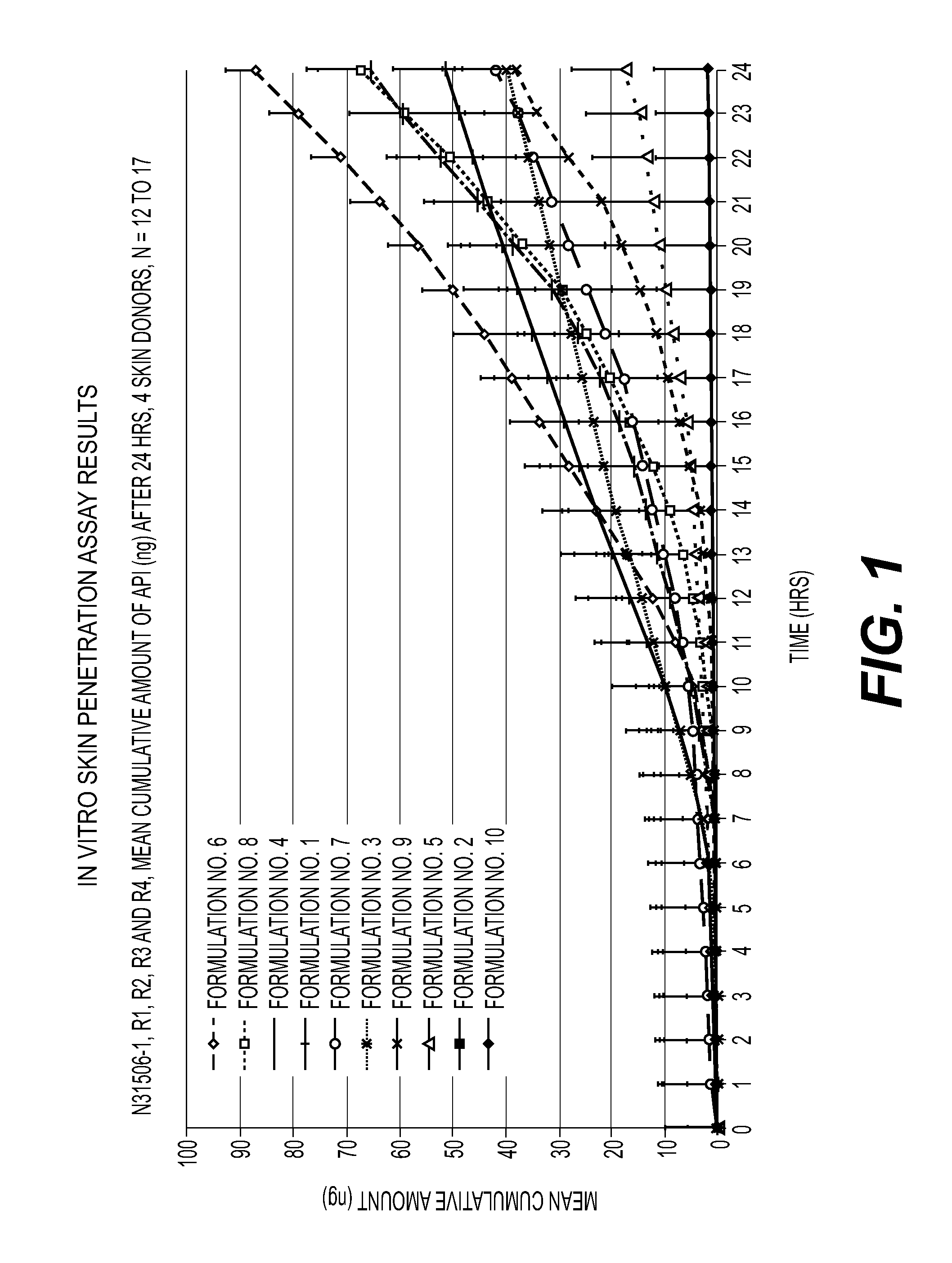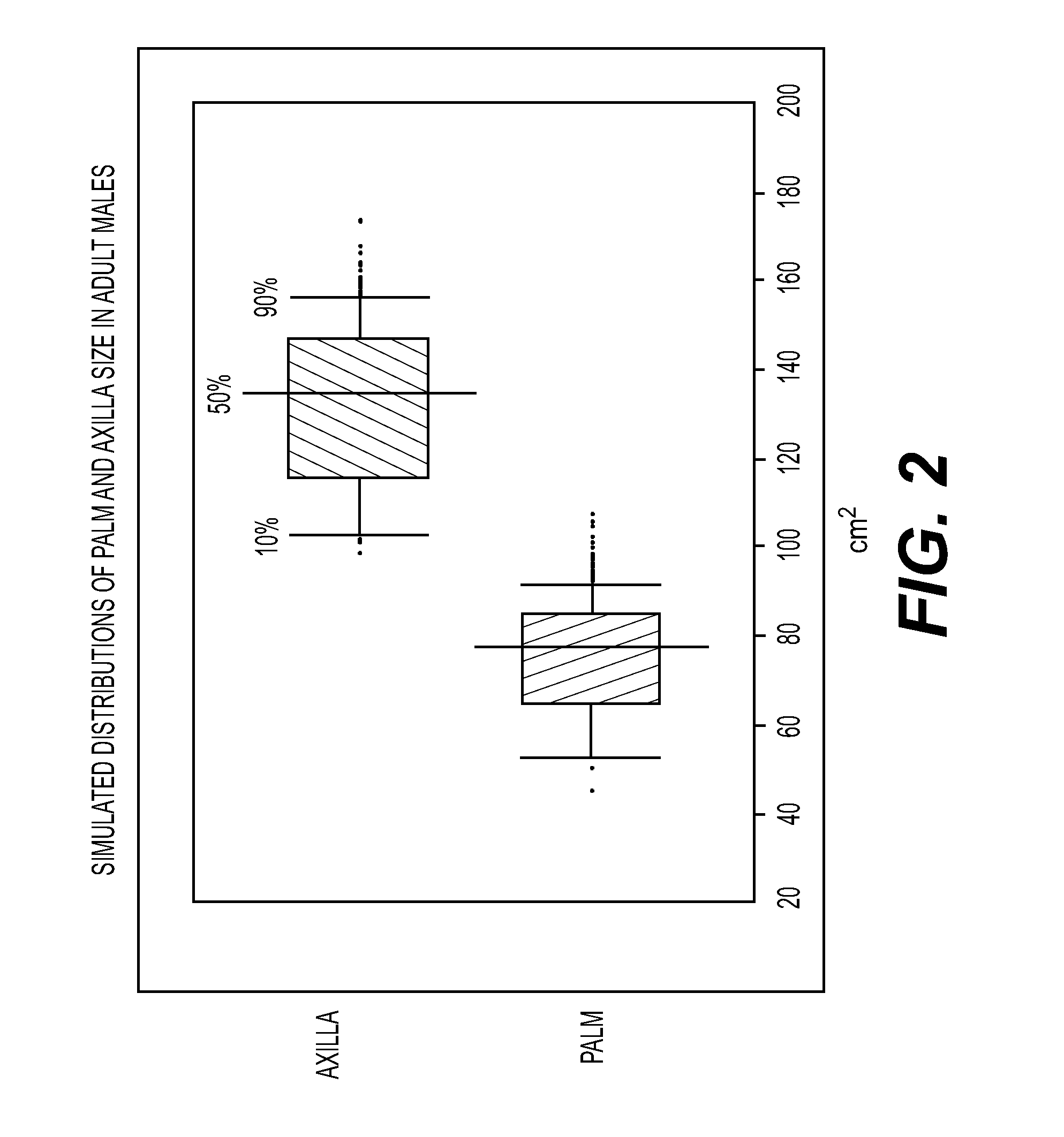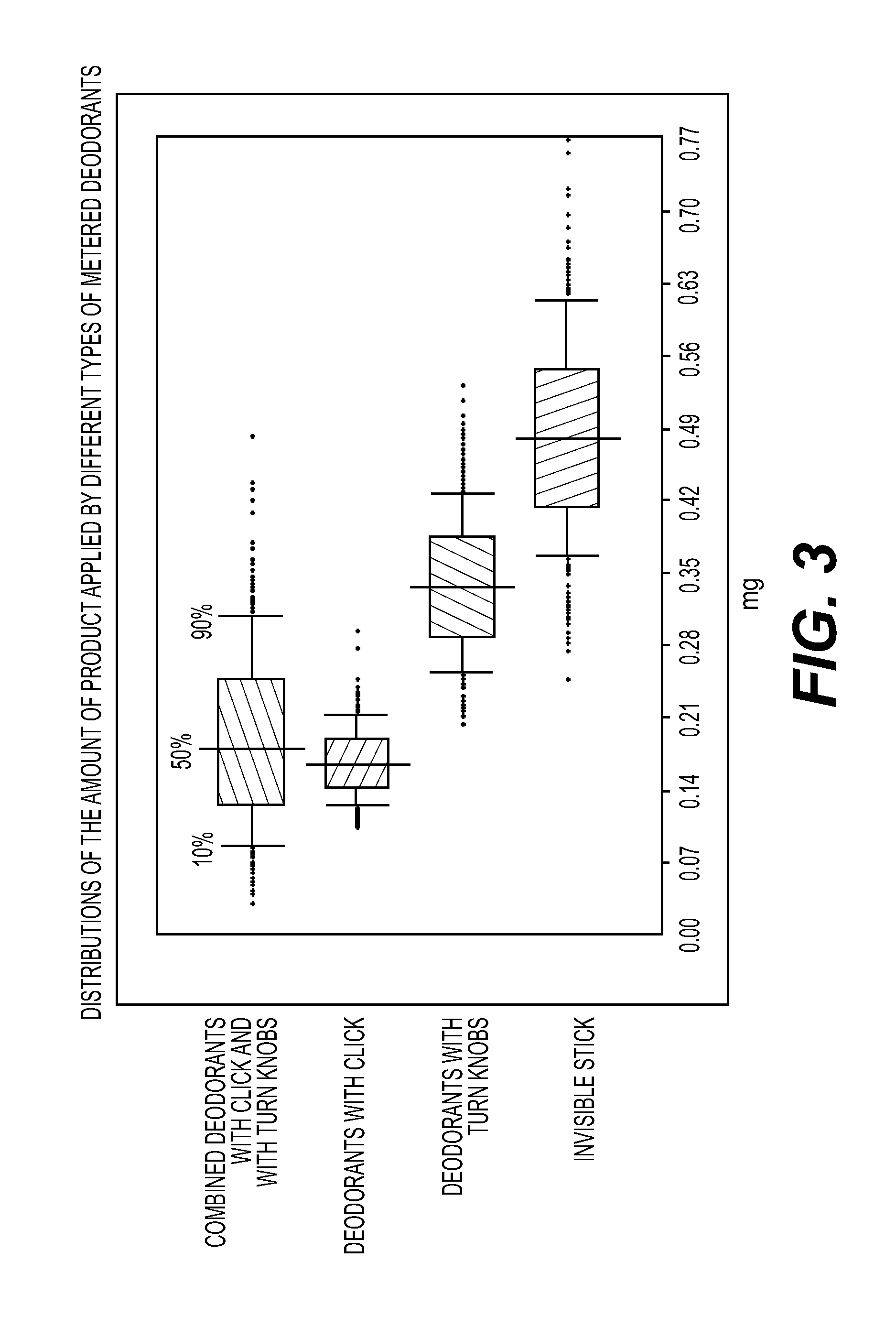Topical compositions for treatment of excessive sweating and methods of use thereof
- Summary
- Abstract
- Description
- Claims
- Application Information
AI Technical Summary
Benefits of technology
Problems solved by technology
Method used
Image
Examples
example 1
Pharmaceutical Compositions
[0220]The following compositions were prepared as shown in the table below.
TABLE 1Formula No.12345678910Component % w / w%%%%%%%%%%Diisopropyl adipate555———————Dimethyl isosorbide1010————————Diethylene glycol252525252525252525—monoethyl etherPropylene glycol262626424256.456.457.657.625Benzyl alcohol11———1111—Isopropyl alcohol15.414.420.915.414.4—————Ethyl alcohol—————————52.8Purified water15.414.420.915.414.415.413.415.413.419.2Umeclidinium2.22.22.22.22.22.22.21.01.01.0bromideHydroxypropyl-—2——2—2—21.75cellulose(Klucel-MF)Polyvinyl—————————0.25pyrolidoneTOTAL100100100100100100100100100100Flux (ng / cm2 / hour)3neg.2.25.71.35.92.96.54.3neg.(data from FIG. 1)Flux (ng / cm2 / hour)0.70NotNotNotNot3.941.33NotNotNot(data from FIG. 8)testedtestedtestedtestedtestedtestedtestedCumulative amount51.3 ± 28.32.1 ± 0.539.7 ±65.3 ±17.6 ±87.3 ± 37.741.9 ± 17.067.3 ± 25.238.2 ± 19.21.9 ± 0.9at 24 hours (ng)14.229.97.9(as illustrated inFIG. 1)Cumulative amount9.24 ± 2.25NotNotNotNot...
example 2
In Vitro Skin Penetration Studies
[0226]The topical pharmaceutical compositions described in Example 1 were subjected to in vitro skin penetration studies to measure the skin flux. The following methodology was used:
Methods and Material
[0227]Full thickness human skin is obtained from patients undergoing abdominoplasty at local hospitals. Immediately following collection, the skin is transferred to a plastic container with phosphate buffered saline (PBS) and kept at 4° C. during shipment. Upon arrival at the laboratory, the subcutaneous fat is removed from the skin samples. The full thickness skin is then placed on high-density foam blocks and dermatomed to a thickness of 500 μm using an Electro-Dermatome. The split thickness skin is then spread out on aluminium foil and placed in a water impermeable plastic bag. The air is removed, and the bag is heat sealed. The sample is stored at −80° C. until the time of the experiment. Previous experiments have shown that skin samples can be pre...
example 3
In Vitro Skin Penetration Studies (Umeclidinium Compared with Glycopyrrolate)
[0243]In vitro studies investigated skin distribution (epidermis / dermis) and the in vitro skin flux of the active ingredient delivered from (i) Formulation No. 1 comprising 2.2% umeclidinium bromide shown in Table 1 and (ii) a comparative formulation comprising 2% glycopyrrolate bromide.
[0244]At 6 hours, following a single finite topical dose of umeclidinium bromide or glycopyrrolate bromide on ex vivo human skin, the molar ratios of glycopyrrolate to umeclidinium (after correction for differences in dose) were a median (range) of 1.5 (0.4-5.8) in the epidermis and 1.2 (0.3-4.3) in the dermis. Thus, the amount of umeclidinium delivered to the dermis was the same order of magnitude (but slightly lower, on average), on a molar dose-normalized basis, as the amount of glycopyrrolate delivered to the dermis.
[0245]At 24 hours following a single finite topical dose in ex vivo human skin, the in-vitro skin flux for...
PUM
| Property | Measurement | Unit |
|---|---|---|
| Fraction | aaaaa | aaaaa |
| Fraction | aaaaa | aaaaa |
| Fraction | aaaaa | aaaaa |
Abstract
Description
Claims
Application Information
 Login to View More
Login to View More - R&D
- Intellectual Property
- Life Sciences
- Materials
- Tech Scout
- Unparalleled Data Quality
- Higher Quality Content
- 60% Fewer Hallucinations
Browse by: Latest US Patents, China's latest patents, Technical Efficacy Thesaurus, Application Domain, Technology Topic, Popular Technical Reports.
© 2025 PatSnap. All rights reserved.Legal|Privacy policy|Modern Slavery Act Transparency Statement|Sitemap|About US| Contact US: help@patsnap.com



